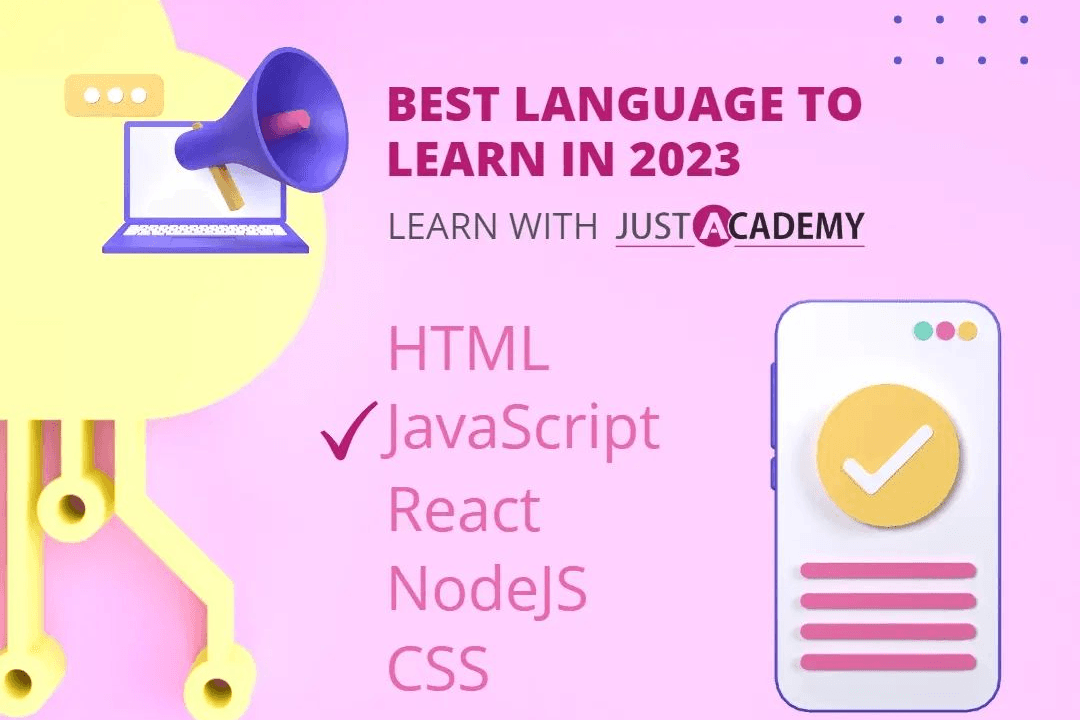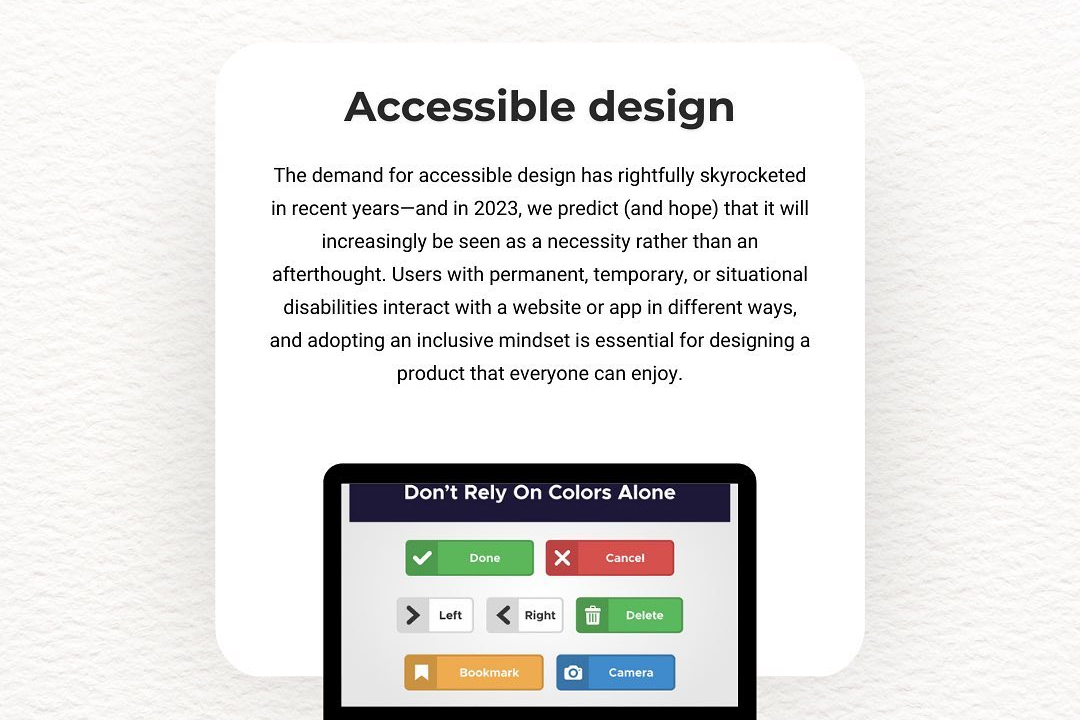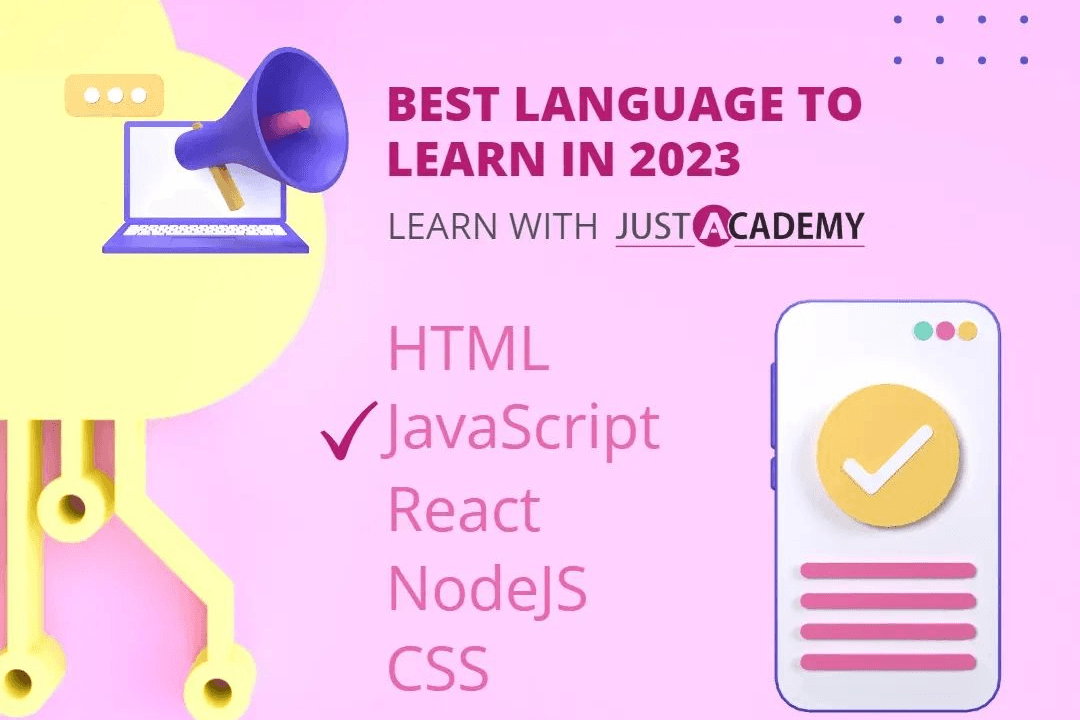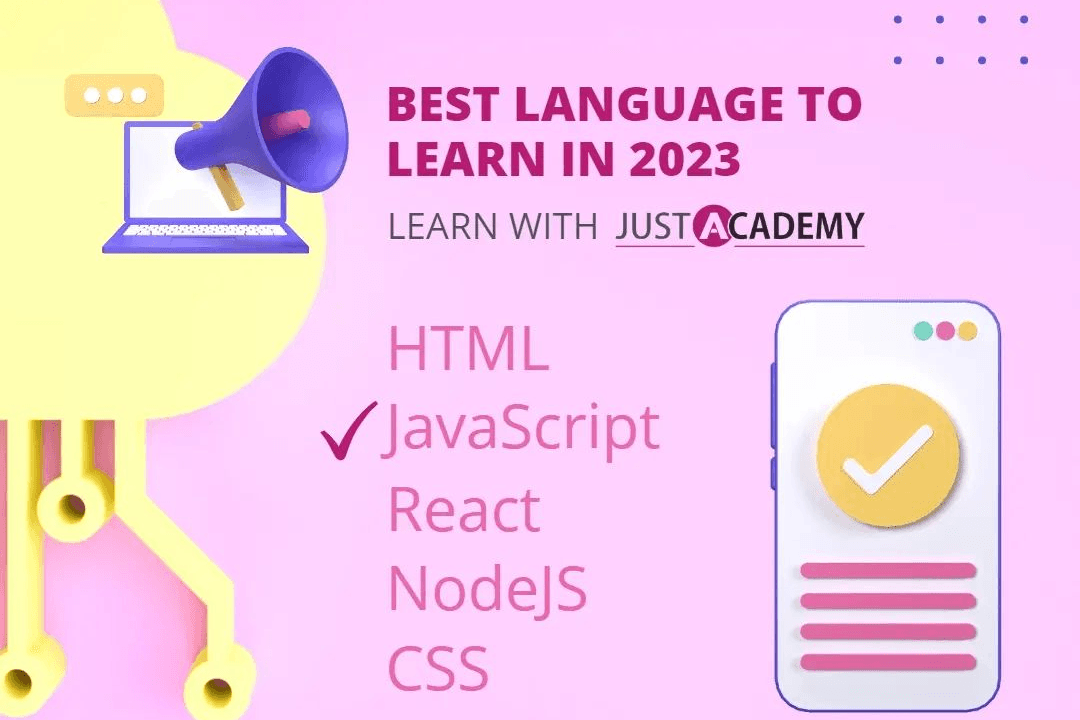Fibonnacii Series Program In Php
The Fibonacci series program in PHP generates a sequence of numbers where each number is the sum of
Fibonnacii Series Program In Php
A Fibonacci series program in PHP serves as an essential exercise for understanding fundamental programming concepts such as loops, recursion, and sequence generation. It helps learners grasp how to implement algorithms that involve iterative or recursive processes, which are foundational skills for more complex programming tasks. Additionally, working with the Fibonacci sequence demonstrates how to work with series and mathematical logic within PHP, making it a valuable tool for beginners to build a solid coding foundation. This program also has practical applications in fields like algorithm design, computational mathematics, and financial modeling.
To Download Our Brochure: https://www.justacademy.co/download-brochure-for-free
Message us for more information: +91 9987184296
A Fibonacci series program in PHP serves as an essential exercise for understanding fundamental programming concepts such as loops, recursion, and sequence generation. It helps learners grasp how to implement algorithms that involve iterative or recursive processes, which are foundational skills for more complex programming tasks. Additionally, working with the Fibonacci sequence demonstrates how to work with series and mathematical logic within PHP, making it a valuable tool for beginners to build a solid coding foundation. This program also has practical applications in fields like algorithm design, computational mathematics, and financial modeling.
Course Overview
The ‘Fibonacci Series Program in PHP’ course introduces learners to generating Fibonacci sequences using PHP, covering fundamental looping and recursive techniques. Designed for beginners, it emphasizes understanding sequence logic, PHP syntax, and efficient coding practices. This course provides a strong foundation in algorithm development, preparing students for more advanced programming challenges and real-world applications involving mathematical sequences.
Course Description
Learn to generate Fibonacci sequences in PHP with this course, covering fundamental concepts, looping, recursion, and efficient coding methods for beginners.
Key Features
1 - Comprehensive Tool Coverage: Provides hands-on training with a range of industry-standard testing tools, including Selenium, JIRA, LoadRunner, and TestRail.
2) Practical Exercises: Features real-world exercises and case studies to apply tools in various testing scenarios.
3) Interactive Learning: Includes interactive sessions with industry experts for personalized feedback and guidance.
4) Detailed Tutorials: Offers extensive tutorials and documentation on tool functionalities and best practices.
5) Advanced Techniques: Covers both fundamental and advanced techniques for using testing tools effectively.
6) Data Visualization: Integrates tools for visualizing test metrics and results, enhancing data interpretation and decision-making.
7) Tool Integration: Teaches how to integrate testing tools into the software development lifecycle for streamlined workflows.
8) Project-Based Learning: Focuses on project-based learning to build practical skills and create a portfolio of completed tasks.
9) Career Support: Provides resources and support for applying learned skills to real-world job scenarios, including resume building and interview preparation.
10) Up-to-Date Content: Ensures that course materials reflect the latest industry standards and tool updates.
Benefits of taking our course
Functional Tools
1 - PHP Programming Language: Central to the course, PHP is a popular open source scripting language primarily used for web development. Students learn how to write, debug, and execute PHP code to generate Fibonacci sequences. The course covers PHP syntax, control structures, functions, and error handling to build efficient algorithms. Practical sessions include developing scripts in PHP IDEs, enabling learners to understand server side programming concepts vital for dynamic website creation.
2) Integrated Development Environment (IDE): Tools like PHPStorm, Visual Studio Code, or Sublime Text are introduced to provide a conducive coding environment. Learners are guided on how to install, configure, and utilize IDE features such as syntax highlighting, code completion, debugging tools, and version control integrations. The IDEs help streamline coding, reduce errors, and improve productivity, making the development process more efficient.
3) XAMPP/WAMP Server: These are application servers that provide an easy to install Apache, MySQL, PHP, and Perl stack to run PHP scripts locally. The course emphasizes setting up these environments to test and execute Fibonacci programs without needing a live server. Students learn server management, database connectivity, and how to deploy PHP applications in a simulated web environment, bridging theory with practice.
4) Version Control Systems (VCS) Git: Emphasized as an essential tool, Git helps students track changes made during code development. They learn commands for initializing repositories, committing changes, branching, merging, and resolving conflicts. Using platforms like GitHub or GitLab, students collaborate on projects, share code snippets, and maintain version histories, fostering good coding habits and teamwork.
5) Command Line Interface (CLI): Students are trained to navigate directories, execute PHP scripts, and manage files through the terminal or command prompt. CLI skills are crucial for efficient development, especially when automating tasks or working on remote servers. Exercises include running PHP scripts directly from the console, understanding environment variables, and managing file permissions.
6) Debugging and Profiling Tools: Tools like Xdebug are introduced for troubleshooting PHP programs. These tools assist students in setting breakpoints, stepping through code, monitoring variable states, and identifying logical errors in Fibonacci sequence implementations. Debugging skills are vital for writing reliable and optimized code, especially when dealing with complex algorithms.
7) Online Coding Platforms: Platforms such as CodePen, Replit, or JDoodle are utilized for instant code testing and sharing. These environments provide immediate feedback and collaborative features, encouraging experimentation. They are especially beneficial for beginners to practice Fibonacci algorithms without complex setup, enhancing learning engagement.
8) Documentation and Commenting Tools: Students learn to effectively document their code using comments, inline notes, and structured documentation formats. Clear documentation ensures code readability and maintainability, essential skills for professional development. Practice sessions focus on writing descriptive comments for Fibonacci functions and algorithms.
9) Educational Resources and Libraries: The course incorporates PHP libraries and snippets that demonstrate optimized Fibonacci calculations. These resources serve as references for implementing recursive, iterative, and dynamic programming approaches. Students explore how to integrate external code modules, enhancing their understanding of code reuse and modular programming.
10) Web Hosting Platforms (Optional): For deploying and showcasing Fibonacci programs online, students may learn to use web hosting services like Bluehost, HostGator, or cloud platforms like AWS. This exposure helps understand deployment pipelines, domain management, and live application testing, preparing students for real world project deployment.
11 - Code Collaboration and Communication Tools: Platforms such as Slack, Discord, or Microsoft Teams facilitate peer to peer interaction, queries, and mentorship. Learners share their Fibonacci solution projects, ask questions, and receive feedback. These tools foster a collaborative learning environment, essential for understanding diverse coding approaches.
12) Testing Frameworks (Optional): Introduced for advanced learners, frameworks like PHPUnit help automate testing of Fibonacci functions, ensuring code correctness under various scenarios. Testing skills are fundamental for maintaining software quality, especially when scaling algorithms for larger datasets or integrating into larger applications.
13) Learning Management Systems (LMS): The course is hosted on LMS platforms such as Moodle, Blackboard, or Custom portals, where instructional content, quizzes, and assignments are organized systematically. Students access course materials, submit projects, and track progress seamlessly, creating an organized learning ecosystem.
14) Mock Interview and Coding Practice Platforms: Sites like LeetCode, HackerRank, or Codewars are used to simulate coding interviews with Fibonacci sequence problems. These platforms help students practice problem solving under timed conditions, improve coding efficiency, and build confidence for technical interviews in the software industry.
15) Visualization Tools: Tools like draw.io or Lucidchart are involved to diagram algorithm flows or class diagrams for Fibonacci implementations. Visual aids help students grasp complex recursive and iterative logic, making abstract concepts more concrete and easier to internalize during training.
16) Online Code Repositories: Utilizing platforms like GitHub and GitLab, students learn best practices for code versioning, branching strategies, pull requests, and collaborative development. These repositories serve as portfolios demonstrating their Fibonacci programming projects, preparing them for real world software development workflows.
17) API Integration Tools: For advanced projects, students explore how to integrate Fibonacci sequence calculations with RESTful APIs or external data sources. This introduces concepts of data exchange, JSON handling, and API authentication, broadening their skills for developing complex, interconnected applications.
18) Continuous Integration/Continuous Deployment (CI/CD) Tools: Learners are introduced to automation pipelines like Jenkins, Travis CI, or GitHub Actions. These tools automate testing and deployment of Fibonacci programs, fostering good DevOps practices and ensuring stability of code before production release.
19) Coding Style Guides and Linters: Emphasized are tools like PHP_CodeSniffer or PHP CS Fixer that enforce consistent coding standards. Students learn to write clean, readable, and maintainable code by adhering to industry best practices, which is critical in collaborative development environments.
20) Code Profilers and Optimization Tools: Introduced tools help analyze the performance of Fibonacci algorithms, identifying bottlenecks and memory leaks. This knowledge enables students to write optimized code suitable for scalability and efficiency in production systems.
21 - Security Testing Tools: For web based PHP applications, students learn basic security practices including input validation, sanitization, and protection against common vulnerabilities like SQL injection or XSS attacks. Ensuring secure code is essential for deploying reliable, safe applications.
22) Cloud Computing Platforms: Platforms such as Google Cloud, Azure, or AWS are used to deploy Fibonacci programs at scale. Introduction to cloud based development and deployment environments helps students understand scalability, load balancing, and cloud resource management.
23) Educational Coding Challenges and Hackathons: Participation in timed coding challenges helps students sharpen their problem solving skills, adapt to varying difficulty levels, and work collaboratively under pressure. Such activities build resilience and adaptability in coding practices.
24) Responsive Web Development Tools: For projects involving web interfaces, students learn to use Bootstrap, CSS, and JavaScript alongside PHP to create dynamic, user friendly Fibonacci sequence displays. This integration prepares them for full stack development projects.
25) Data Visualization Libraries: Tools like Chart.js, D3.js, or PHP Graph libraries enable students to graph Fibonacci sequence data. Visual representations facilitate better understanding of numerical patterns and sequence behaviors.
26) Automated Documentation Tools: Utilization of tools like PHPDocumentor allows students to generate professional API documentation automatically from annotated code. Mastering documentation ensures clarity and maintainability of their projects.
27) QA and Testing Automation: Incorporating testing scripts and automated QA workflows into the development pipeline ensures code correctness, robustness, and stability of Fibonacci algorithms across various environments and inputs.
28) E learning and Interactive Content Platforms: Leveraging platforms like Moodle or Articulate, students engage with interactive tutorials, quizzes, and gamified learning modules, reinforcing their understanding of Fibonacci programming concepts in an engaging manner.
29) Networking and Communication Protocols: For distributed Fibonacci computations, learners explore basics of TCP/IP, socket programming, and server client architecture, broadening their understanding of networked application development.
30) Industry Standards and Certifications Preparation: The course prepares students to obtain relevant certifications such as PHP Developer Certification, DevOps certifications, or Cloud certifications, which enhance their professional credibility and career prospects in software development.
Browse our course links : https://www.justacademy.co/all-courses
To Join our FREE DEMO Session:
This information is sourced from JustAcademy
Contact Info:
Roshan Chaturvedi
Message us on Whatsapp:
Email id: info@justacademy.co
Microsoft Power Bi Certification Cost In India











